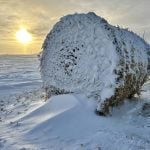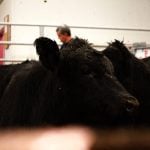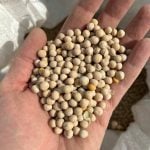If you like weather data, then you are going to love this week’s topic.
As I promised while away on vacation, when I get back, we will do our usual look back at last month’s weather across the Prairies. The end of March is also the end of the extended winter season, so it is also time to look back and see how all the numbers added up and compared over the winter.
We will look at the average temperature rankings for the main reporting centres in each province, followed by a look at how those actual temperatures compare to average. We will then follow that up with a look at precipitation rankings and how they compare to average. We’ll then do the same thing for the extended winter period by averaging out the mean monthly temperatures from November to March and totalling up how much precipitation fell during that same period.
Read Also

What is perfect Christmas weather?
What is ‘perfect’ Christmas weather on the Prairies? Here’s where you should head this holiday, according to historical weather data.

Looking at March temperatures, you can see that for actual temperatures Alberta was the warmest location with Winnipeg sneaking into the top three. However Dauphin, which is not that far away from Winnipeg, came in as the coldest centre. Also of interest — while both Calgary and Edmonton were warmer than Winnipeg, Winnipeg’s temperature compared to average just nudged out those two locations by 0.1 C.
Looking at March precipitation you can quickly see that with the exception of Edmonton, it was a very dry month. The least amount of precipitation fell in Peace River with only 0.4 mm recorded. Brandon saw a bit more at 4 mm, but Brandon’s higher monthly average meant that compared to average, Brandon was the driest spot.
Overall, it was a warmer than average March across Alberta along with southern and eastern Manitoba, with Saskatchewan and northwestern agricultural Manitoba seeing below average temperatures. Precipitation was mostly near to below average with central Alberta seeing above average amounts.
If we look back at the forecasts for the month, it would appear that the European or ECMWF forecast and my own were the closest with calls for near to slightly above average temperatures and near to slightly below average precipitation. Not perfect but they were the closest.

Now on to the extended winter data (November to the end of March), starting off with temperatures.
Just like with the March temperatures, we have the same top three locations when looking at the actual mean winter temperatures, and we see the same pattern when we look at how the temperatures compared to average with Winnipeg once again coming in as the warmest location, by a fair bit. There was a little bit of shift when it came to the coldest regions, but not much. The coldest regions were found across Saskatchewan and western Manitoba.
Looking at the precipitation totals for the winter, Edmonton and Winnipeg were the wet spots with both locations reporting right around 100 mm of water equivalent precipitation. Edmonton won out as the wettest location compared to average coming in at 123 per cent of average. At the other end of the spectrum, Dauphin, Saskatoon, and Peace River saw the least amount. Compared to average, Peace River was the driest coming in at only 30 per cent of average.
If we were to summarize the winter of 2024-25, I would say that it saw near average temperatures along with near to below average precipitation. If we look back at the winter forecasts that were made at the beginning of November, and after examining all the forecasts, none of them were very close.
If I had to pick one then it would be the ECMWF with their prediction of slightly warmer than average temperatures with slightly above average precipitation with Alberta seeing the best chance of above average amounts.
















